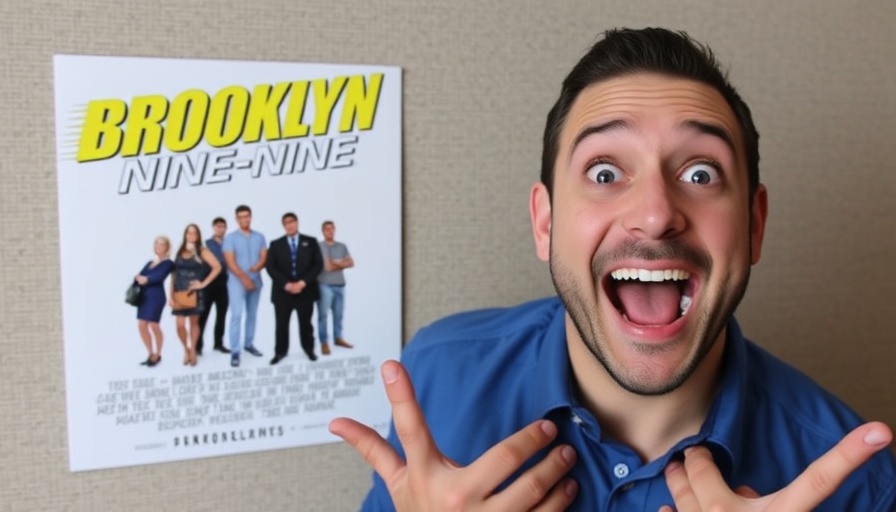
Unpacking Medical Humor: Brooklyn Nine-Nine's Take on Healthcare
The comedy series *Brooklyn Nine-Nine* is known for its hilarious portrayal of the New York City Police Department. But it's the show's quirkiness and sharp wit that makes even its medical scenes unforgettable. The recent video reacting to these scenes dives deep into the humor surrounding health issues, revealing how satire intersects with real medical knowledge. Let’s explore the insights from this engaging commentary.
In 'Doctor Reacts To Hilarious Brooklyn 99 Medical Scenes', the discussion dives into the intersection of comedy and healthcare, exploring key insights that sparked deeper analysis on our end.
When Comedy Meets Medical Facts
In the highlighted reaction scenes, we see comedic characters discuss a range of medical topics—vasectomies, mumps, and even the medical ramifications of extended sitting. While the humor is often exaggerated, it does touch on some important truths about health. For instance, a vasectomy, often surrounded by misconceptions, is less about drastic implications and more about a straightforward surgical procedure to manage fertility.
This truth serves as a perfect example of how *Brooklyn Nine-Nine* not only entertains but also educates. It prompts viewers to reflect on their understanding of medical issues, helping debunk the existing myths surrounding men's reproductive health.
Public Perception of Health—The Humor Factor
The show’s comedic depiction of quarantining due to mumps showcases not only the humor but also the reality of contagious diseases. Given today’s climate, especially in light of recent global health challenges, this portrayal acts as a reminder of the importance of vaccinations and public health awareness. The characters' fears about being quarantined resonate with many, particularly as our society grapples with the consequences of misinformation regarding health.
Moreover, the reaction brings to the forefront how humor can ease conversations about otherwise serious or stigmatized subjects. In a world where many avoid discussing health issues due to embarrassment or fear, shows like *Brooklyn Nine-Nine* can disarm apprehensions through laughter.
Bridging Knowledge Gaps with Comedy
In one scene, characters discuss the significance of movements in maintaining health, referring to the dangers of stagnation. The comedic exaggeration serves to highlight a critical aspect of well-being—keeping the body active. Prolonged periods of inactivity can lead to serious health issues, from clots to musculoskeletal problems. Through humor, the show advocates for proactive health measures that resonate with a younger audience, encouraging them to be mindful of their physical health.
Empowering Conversations Around Feminine Health
One particularly impactful moment involves a character discussing a significant abdominal mass. This scene opens a conversation about women's health issues—an often neglected area in both media and healthcare. By representing such experiences humorously, the show makes space for dialogue that is crucial for breaking down barriers surrounding women's reproductive health and accessibility to care.
Conclusion: Laughter as a Vehicle for Health Education
The reaction to *Brooklyn Nine-Nine*'s medical scenes illustrates how humor can be a powerful tool in facilitating important conversations about health. By dissecting the humor within these scenarios, we find opportunities to engage with healthcare in a way that is accessible, relatable, and—most importantly—informative. Let’s use laughter not just for entertainment but also as a means of promoting better health literacy and understanding among all audiences.
As we move forward in discussions about health, it’s vital to engage through multiple platforms, blending humor with facts to create an informed society.
 Add Row
Add Row  Add
Add 




Write A Comment